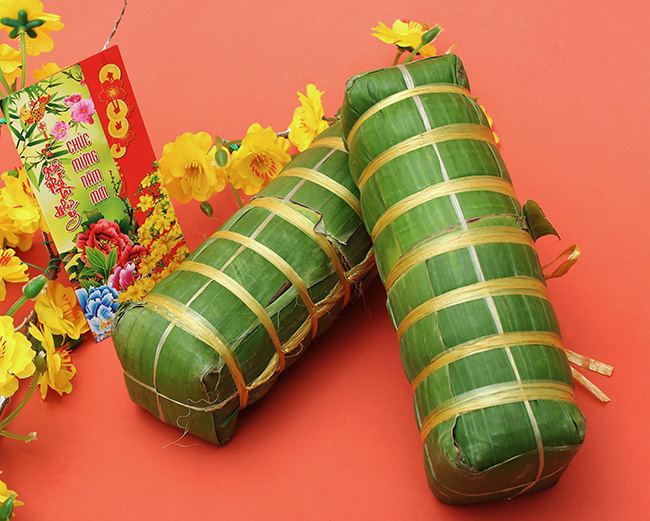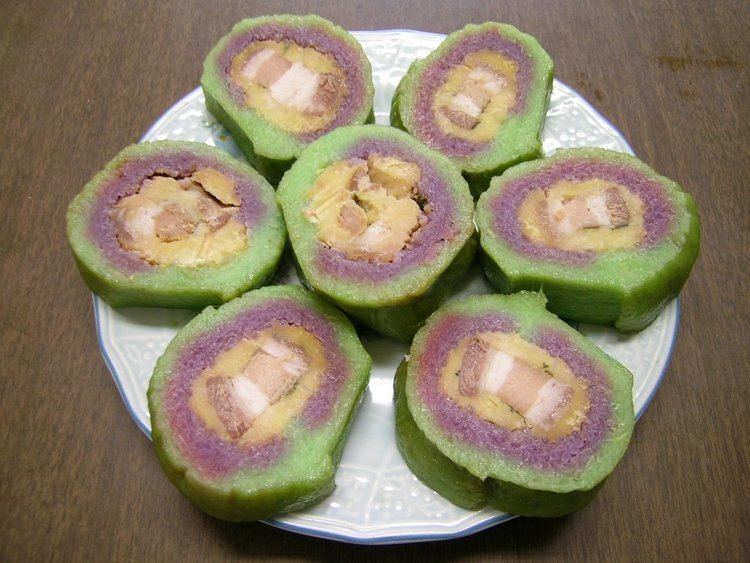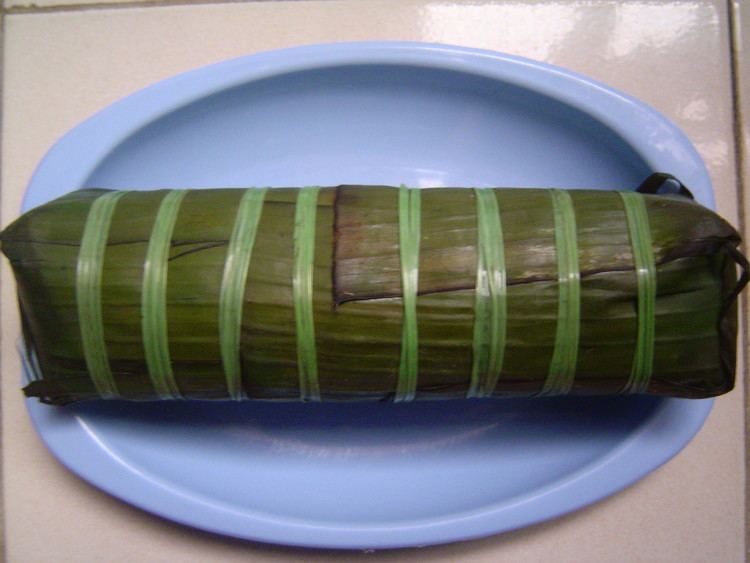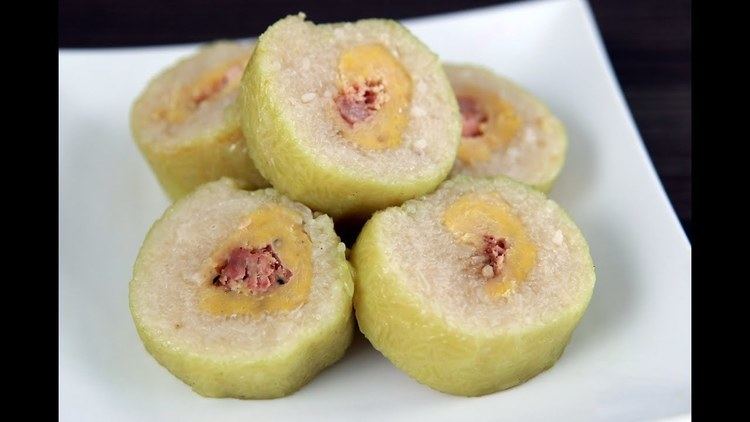 | ||
Similar Bánh chưng, Bánh, Thit Kho Tau, Cốm, Bánh xèo | ||
B nh t t vietnamese sticky rice cake
Bánh tét is a Vietnamese savoury but sometimes sweetened cake made primarily from glutinous rice, which is rolled in a banana leaf into a thick, log-like cylindrical shape, with a mung bean or mung bean and pork filling, then boiled.video After cooking, the banana leaf is removed and the cake is sliced into wheel-shaped servings. photo
Contents

Etymology

Although bánh tét are made and consumed during Tết (the Vietnamese new year), the "tét" in the food's name literally means "sliced" or "split", possibly referring to the fact that it is served in slices. "Bánh" is used to refer to various baked and grilled food including small packages or "cakes", sandwiches, crepes, and spring rolls.
Process

The process of making bánh tét usually begins the day before Tết where the ingredients are prepared then cooked for at least six hours in a pot of boiling water. The first step is assembling the ingredients - glutinous rice, mung bean paste or soaked mung bean and pork belly. Next, the ingredients are layered on top of banana leaves before wrapped together tightly with strings. To prevent the banana leaf from coming apart during cooking, bánh tét are usually wrapped again several times with a length of plastic ribbon before boiling in a large pot of water. photo
Traditions

Bánh tét is a must have traditional food in Vietnamese Lunar New Year. It demonstrates the importance of rice in the Vietnamese culture as well as historical value. During Vietnamese Tết, family members would gather together and enjoy feasting on bánh tét, the central food of this festive Vietnamese holiday to celebrate the coming of spring. The process of making bánh tét is time consuming, but a tradition that many families still practice even in this modern society where pre-made bánh tét are sold virtually in every Vietnamese store. It is the effort that counts and many choose to spend time with their family to create the holiday treat the traditional way. The process of making bánh tét is to provide an opportunity for family members to bond and come together to celebrate the holiday spirit.

The cake is eaten during the Vietnamese Lunar New Year holiday, dipped in fish sauce with or without chilli, and can be eaten together with pickled scallions. The cake can also be fried.
Bánh tét are traditional to and most popular in central and southern Vietnam. A similar food (though rectangular in shape) is called bánh chưng in the north. According to historian Trần Quốc Vượng, bánh tét is a version of bánh chưng derived during Vietnam's process of Nam tiến (southward expansion) in the 17th century. According to legend, bánh chưng was first made 4,000 years ago by Prince Lang Lieu. The cakes were round and squared shapes, the round Day cake symbolizing the sky and the square Chung cake symbolizing the Earth.
